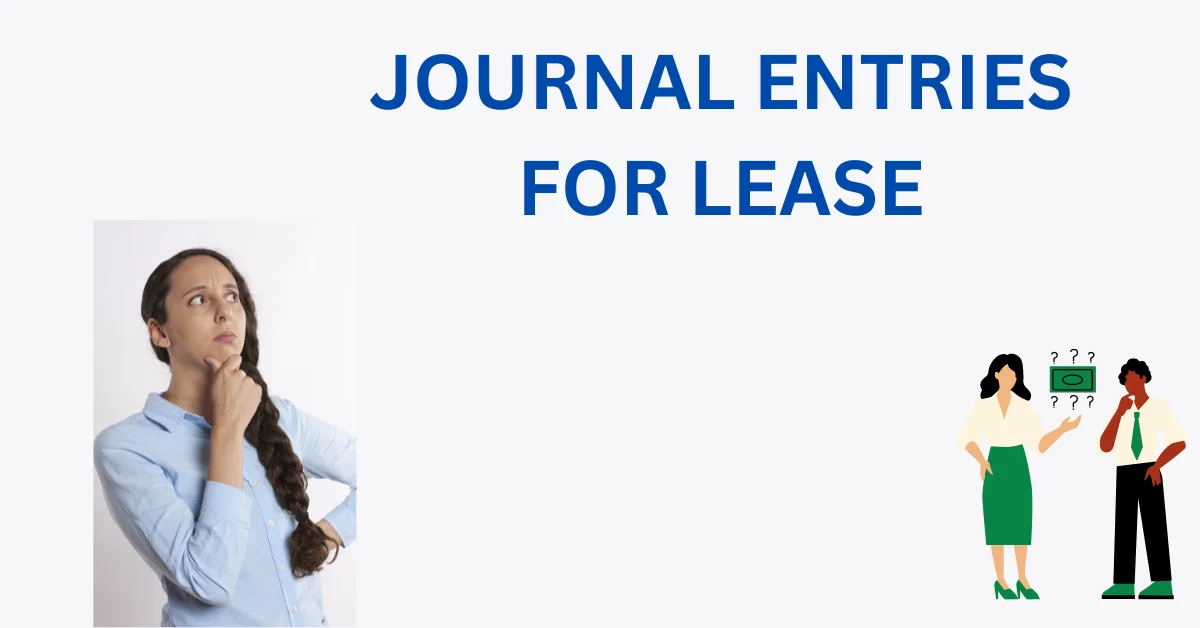In this article we will provide the information related to the how to pass the Journal Entries for Lease.
A lease agreement involves a contractual arrangement between a lessee (the user) and a lessor (the owner of the asset). The lessee pays money to the lessor for the right to use the asset.
All the financial transactions and obligations that arise from these lease agreements can be recorded through journal entries. Both the lessee and lessor maintain their own set of journal entries.
Before delving into the journal entries, it’s essential to understand the types of leases, as they impact how the entries are recorded:
CAPITAL OR FINANCE LEASE
A lease qualifies as a capital or finance lease if it meets the following conditions:
- a) The lessor transfers ownership of the asset to the lessee at the end of the lease term.
- b) There is a purchase option within the lease agreement.
- c) The lease term covers 75% or more of the asset’s total life. For instance, if the asset’s total life is 6 years and the lease agreement is for 5 years, it qualifies as a capital lease.
- d) The present value of lease payments amounts to 90% or more of the asset’s fair value.
OPERATING LEASE
In an operating lease, the asset is not transferred to the lessee. Instead, the lessee uses the asset in exchange for rental payments. Ownership remains with the lessor throughout the lease period, and the lessor bears the risks associated with the asset.
Now, let’s clarify some key terms:
- Payment or Rent Payment: This is the amount paid by the lessee to the lessor, including both interest and principal amounts.
- Lease Obligation or Payable: It represents the principal amount that the lessee is obligated to pay to the lessor over the lease term.
- Interest: Interest is the income earned by the lessor and represents the gain from the lease.
JOURNAL ENTRIES IN THE BOOKS OF LESSEE
{A} When There Is a Capital Lease
- For the total amount of lease payable (at the beginning of the lease):
Fixed Asset Account Debit
Lease Payable Account Credit
- For the transfer of depreciation to the Depreciation Accumulated Account (at the end of the first year and subsequent years):
Depreciation Account Debit
Accumulated Depreciation Account Credit
- For the payment of lease obligation and interest (e.g., rent payment of $5,000, consisting of $4,000 lease obligation and $1,000 interest):
Lease Payable Account Debit $4,000
Interest Account Credit $1,000
Bank Account Credit $5,000
{B} When There Is an Operating Lease
At the end of the year and subsequent years:
Rent of Lease Account Debit $5,000
Cash Account Credit $5,000
Journal Entries in the Books of Lessor
{A} When There Is a Capital Lease
- For the total amount of lease receivables (similar to a credit sale of a fixed asset, at the beginning of the lease):
Lease Receivables Account Debit
Fixed Asset Account Credit
- For receiving the amount of lease (e.g., rent received is $5,000):
Lease Receivable Account Debit $5,000
Bank Account Credit $5,000
{B} When There Is an Operating Lease
At the end of the year and subsequent years:
Bank Account Debit $5,000
Lease Receivable Account Credit $5,000.
